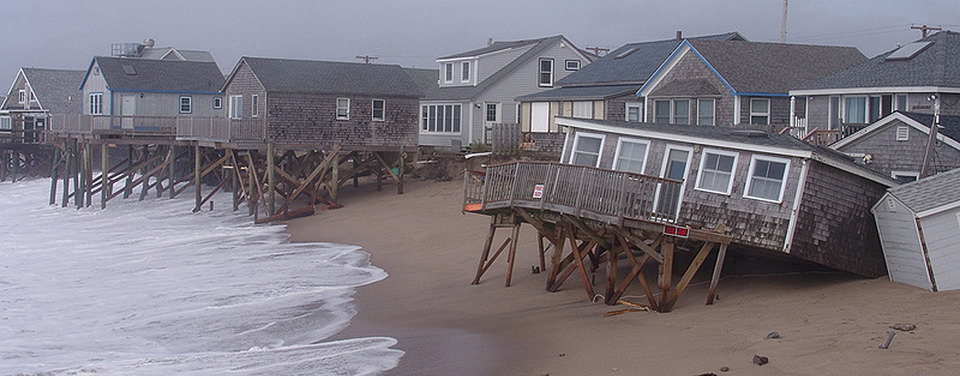What threats do coastal communities face?
The threats to coastal communities include extreme natural events such as hurricanes, coastal storms, tsunamis, and landslides, as well as longer-term risks of coastal erosion and sea level rise.

Floods are the most frequent natural disaster; one in three Federal disaster declarations is related to flooding.
Losses from catastrophic events such as hurricanes can be extensive. The economic losses from the 2005 hurricane season, which included Hurricanes Katrina and Rita, were $200 billion, the costliest season ever.
For some threats, such as sea level rise, only the projected economic losses are indicated. For example, the vast majority of our nation’s commercial and recreational fisheries are dependent on coastal marshes. Approximately two-thirds of those fisheries spend some stage of their lives in tidal marshes. As sea levels rise, the built-up areas behind these marshes will provide no opportunities for wetlands to migrate. The net result will be billions of dollars in economic impacts affecting the livelihoods and sustainability of many coastal communities.
Coastal threats are different throughout the United States. For example, in the Pacific Islands, there are more potentially catastrophic coastal hazards such as tsunamis, flooding, and even droughts. In the North Atlantic, there are more severe storms, population and development pressures, and regional-scale impacts such as climate change.
It is critical to develop hazard-resilient communities to prepare for these threats and enhance the ability of these communities to absorb impacts and bounce back. This preparation will reduce the lives lost in disasters, secure the economic stability of these communities, and support the health of our coastal ecosystems, including wetlands which are essential for reducing storm impacts on our coastal communities.